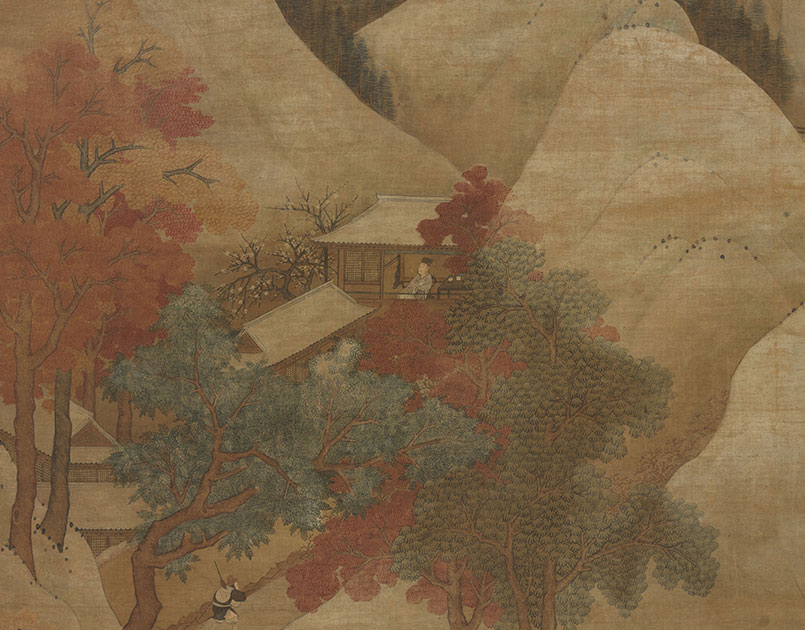
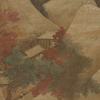
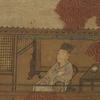
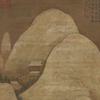
About the Artist
Artwork Story
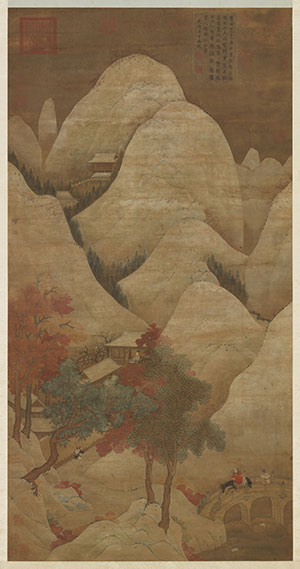
This scroll, housed in the Taipei National Palace Museum, depicts a snow-clad landscape where crimson foliage contrasts starkly with silvery peaks. The composition employs pale ink outlines without texture strokes (cunfa), instead layering azurite green, vermilion, and white pigments to evoke a vivid yet archaic atmosphere. Repeating arcs in mountain forms create rhythmic simplicity, echoing Six Dynasties aesthetics. A scholar contemplates the vista from a pavilion, while a visitor on a donkey crosses a frost-laden bridge, their postures subtly conveying winter’s bite and literati resilience.
Though bearing Zhang Sengyou’s signature, scholars note discrepancies: Zhang’s documented “concave-convex technique” (aotu) for Buddhist figures and sparse brushwork (shuti) differ from this work’s stiff architectural lines and flat color planes, suggesting a Ming-era reinterpretation of “boneless landscape” (mogu shanshui). Imperial seals and Emperor Qianlong’s poetic colophon (“A donkey-rider on the broken bridge resembles the hermit of Lonely Mountain”) authenticate its elite Ming-Qing provenance.
Blending Six Dynasties’ naivety with Ming stylization, this scroll exemplifies how late scholars like Dong Qichang reimagined Zhang’s legacy, bridging ancient innovation and early modern artistic revival.


 (c. 1380-1390)-full.webp)
-full.webp)
-full.webp)
-full.webp)
-full.webp)
-full.webp)